You should spend about 20 minutes on Questions 1-13 which are based on Reading Passage 10 below.
ABSENTEEISM IN NURSING:
A LONGITUDINAL STUDY
Absence from work is a costly and disruptive problem for any organisation. The cost of absenteei* in Australia has been put at 1.8 million hours per day or $1400 million annually. The study reported here was conducted in the Prince William Hospital in Bri*ane, Australia, where, prior to this time, few active steps had been taken to measure, understand or manage the occurrence of absenteei*.
Nursing Absenteei*
A prevalent attitude amongst many nurses in the group selected for study was that there was no reward or recognition for not utilising the paid sick leave entitlement allowed them in their employment conditions. Therefore, they believed they may as well take the days off — sick or otherwise. Similar attitudes have been noted by
James (1989)
, who noted that sick leave is seen by many workers as a right, like annual holiday leave.
Miller and Norton (1986) , in their survey of 865 nursing personnel, found that 73 percent felt they should be rewarded for not taking sick leave because some employees always used their sick leave. Further, 67 per cent of nurses felt that administration was not sympathetic to the problems shift work causes to employees’ personal and social lives. Only 53 percent of the respondents felt that every effort was made to schedule staff fairly.
In another longitudinal study of nurses working in two Canadian hospitals, Hacket Bycio and Guion (1989) examined the reasons why nurses took absence from work. The most frequent reason stated for absence was minor illness to self. Other causes, in decreasing order of frequency, were illness in family, family social function, work to do at home and bereavement.
Method
In an attempt to reduce the level of absenteei* amongst the 250 Registered an Enrolled Nurses in the present study, the Prince William management introduced three different, yet potentially complementary, strategies over 18 months.
Strategy 1: Non-financial (material) incentives :
Within the established wage and salary system it was not possible to use hospital funds to support this strategy. However, it was possible to secure incentives from local businesses, including free passes to entertainment parks, theatres, restaurants, etc. At the end of each roster period, the ward with the lowest absence rate would win the prize.
Strategy 2
Flexible fair rostering:
Where possible, staff were given the opportunity to determine their working schedule within the limits of clinical needs.
Strategy 3:
Individual absenteei*
: and Each month, managers would *yse the pattern of absence of staff with excessive sick leave (greater than ten days per year for full-time employees). Characteristic patterns of potential ‘voluntary absenteei*’ such as absence before and after days off, excessive weekend and night duty absence and multiple single days off were communicated to all ward nurses and then, as necessary, followed up by action.
Results
Absence rates for the six months prior to the Incentive scheme ranged from 3.69 per cent to 4.32 per cent. In the following six months, they ranged between 2.87 percent and 3.96 percent. This represents a 20 percent improvement. However, *ysing the absence rates on a year-to-year basis, the overall absence rate was 3.60 percent in the first year and 3.43 percent in the following year. This represents a 5 percent decrease from the first to the second year of the study. A significant decrease in absence over the two-year period could not be demonstrated.
Discussion
The non-financial incentive scheme did appear to assist in controlling absenteei* in the short term. As the scheme progressed it became harder to secure prizes and this contributed to the program’s losing momentum and finally ceasing. There were mixed results across wards as well. For example, in wards with staff members who had a long-term genuine illness, there was little chance of winning, and to some extent, the staffs on those wards were disempowered. Our experience would suggest that the long-term effects of incentive awards on absenteei* are questionable.
Over the time of the study, staff were given a larger degree of control in their rosters. This led to significant improvements in communication between managers and staff. A similar effect was found from the implementation of the third strategy. Many of the nurses had not realised the impact their behaviour was having on the organisation and their colleagues but there were also staff members who felt that talking to them about their absenteei* was ‘picking’ on them and this usually had a negative effect on management—employee relationships.
Conclusion
Although there has been some decrease in absence rates, no single strategy or combination of strategies has had a significant impact on absenteei* per se. Notwithstanding the disappointing results, it is our contention that the strategies were not in vain. A shared ownership of absenteei* and a collaborative approach to problem solving has facilitated improved cooperation and communication between management and staff. It is our belief that this improvement alone, while not tangibly measurable, has increased the ability of management to manage the effects of absenteei* more effectively since this study.
[” This article has been adapted and condensed from the article by G. William and K. Slater (1996), ‘Absenteei* in nursing: A longitudinal study’, Asia Pacific Journal of Human Resources, 34(1): 111-21. Names and other details have been changed and report findings may have been given a different emphasis from the original. We are grateful to the authors and Asia Pacific Journal of Human Resources for allowing us to use the material in this way. ” ]
Questions 1-7
Do the following statements agree with the information given in Reading Passage.
In boxes 1-7 on your answer sheet write:
YES
if the statement agrees with the information
NO
if the statement contradicts the information
NOT GIVEN
if there is no information on this in the passage
1.
The Prince William Hospital has been trying to reduce absenteei* amongst nurses for many years.
2.
Nurses in the Prince William Hospital study believed that there were benefits in taking as little sick leave as possible.
3.
Just over half the nurses in the 1986 study believed that management understood the effects that shift work had on them.
4.
The Canadian study found that ‘illness in the family’ was a greater cause of absenteei* than ‘work to do at home’.
5.
In relation to management attitude to absenteei* the study at the Prince William Hospital found similar results to the two 1989 studies.
6.
The study at the Prince William Hospital aimed to find out the causes of absenteei* amongst 250 nurses.
7.
The study at the Prince William Hospital involved changes in management practices.
Questions 8-13
Complete the notes below.
Choose ONE OR TWO WORDS from the passage, for each answer.
Write your answers in boxes 8-13 on your answer sheet.
In the first strategy, wards with the lowest absenteei* in different periods would win prizes donated by
……. (8) …….
In the second strategy, staff were given more control over their
……(9 )……..
In the third strategy, nurses who appeared to be taking
…… (10)……
sick leave or
…… (11) ……
were identified and counselled.
Initially, there was a
…… (12)……
per cent decrease in absenteei*.
The first strategy was considered ineffective and stopped.
The second and third strategies generally resulted in better
…… (13) ……
among staff.
Answer:
1. NO 2. NO 3. NO 4. YES 5. NOTGIVEN 6. NO 7. YES 8. (local) busunesses 9.(work/working) schedule/ rostering/ roster(s) 10. excessive 11. voluntary absence / absenteei* 12. twenty / 20 13. communication


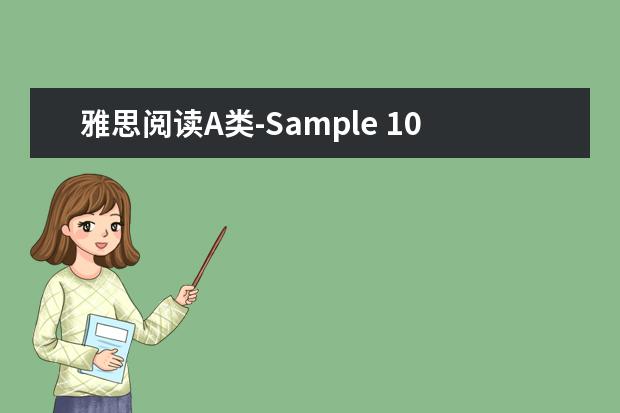
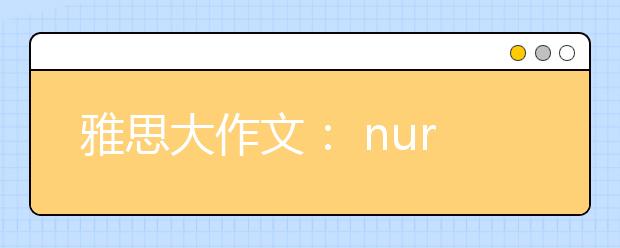 雅思大作文: nursing homes in modern society
雅思大作文: nursing homes in modern society
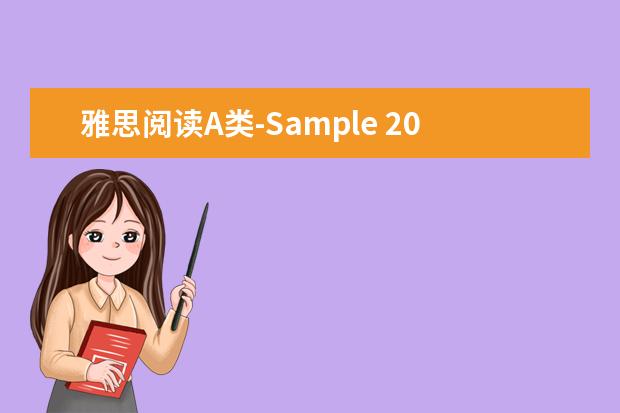 雅思阅读A类-Sample 20:The Pursuit of Happiness
雅思阅读A类-Sample 20:The Pursuit of Happiness
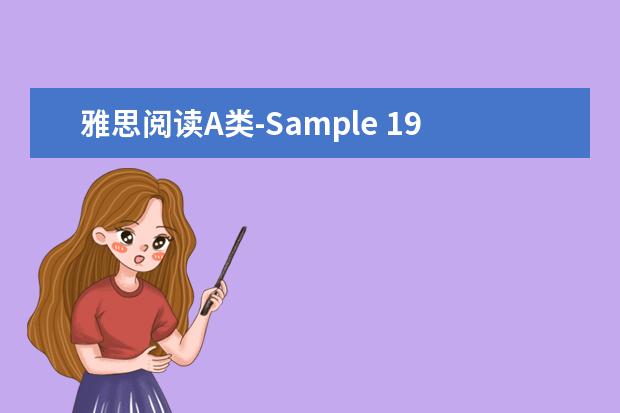 雅思阅读A类-Sample 19:Creating Artificial Reefs
雅思阅读A类-Sample 19:Creating Artificial Reefs
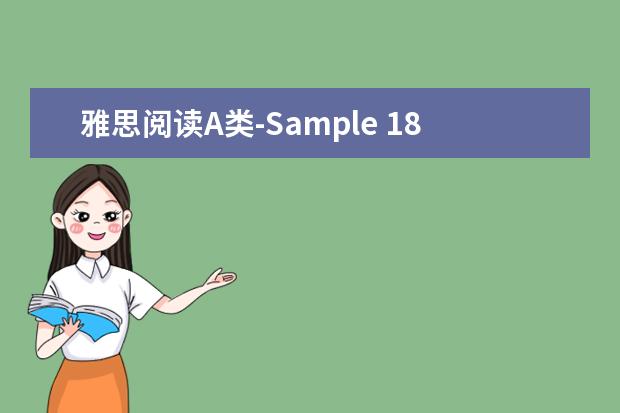 雅思阅读A类-Sample 18:The Discovery of Uranus
雅思阅读A类-Sample 18:The Discovery of Uranus
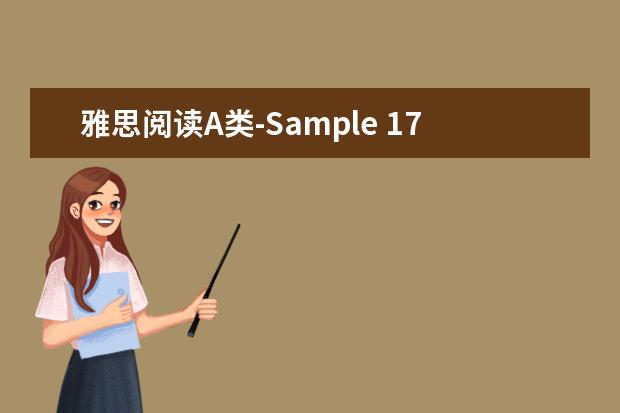 雅思阅读A类-Sample 17:The Danger Of Ecstasy
雅思阅读A类-Sample 17:The Danger Of Ecstasy
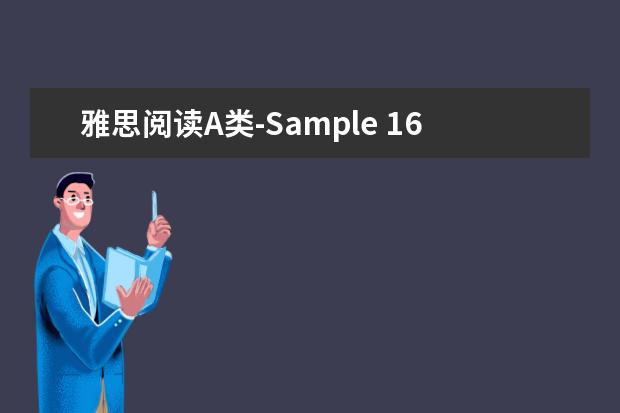 雅思阅读A类-Sample 16:Destinations For International English Students
雅思阅读A类-Sample 16:Destinations For International English Students
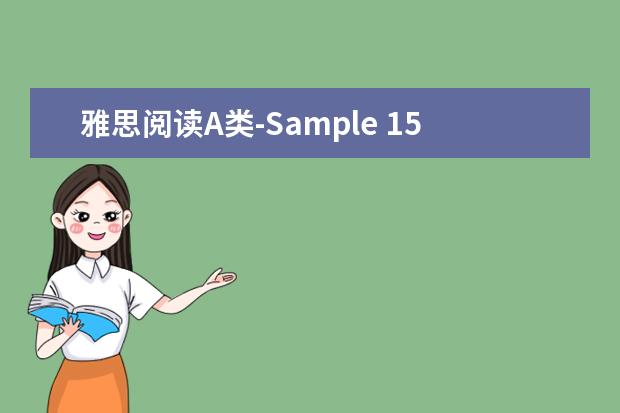 雅思阅读A类-Sample 15:Beneath The Canopy
雅思阅读A类-Sample 15:Beneath The Canopy
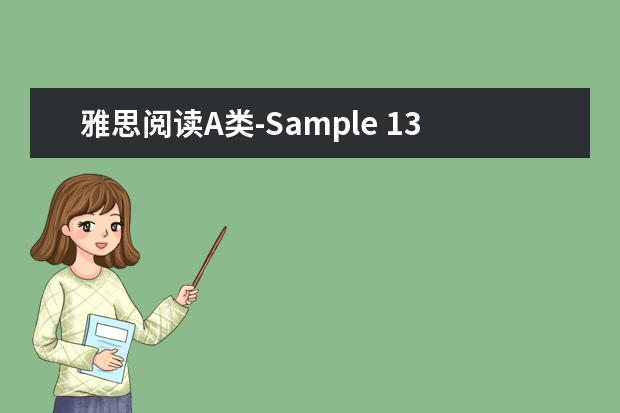 雅思阅读A类-Sample 13:A.D.D. Missing Out on Learning
雅思阅读A类-Sample 13:A.D.D. Missing Out on Learning
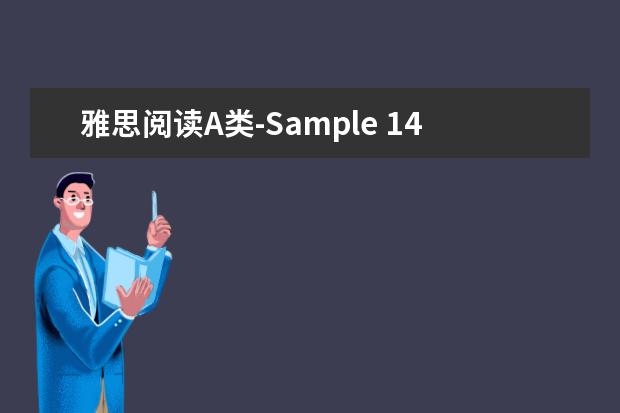 雅思阅读A类-Sample 14:The Beam Operated Traffic System
雅思阅读A类-Sample 14:The Beam Operated Traffic System
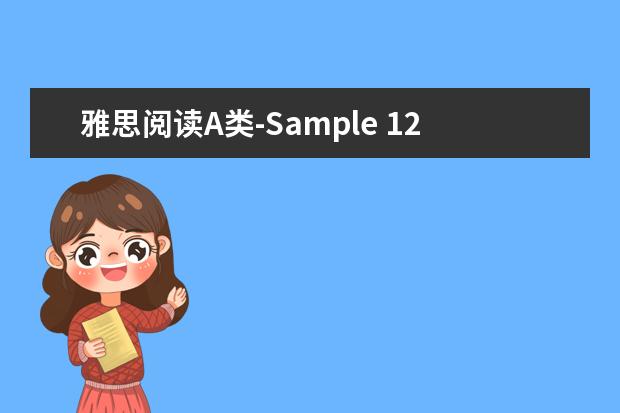 雅思阅读A类-Sample 12:The Scientific Method
雅思阅读A类-Sample 12:The Scientific Method
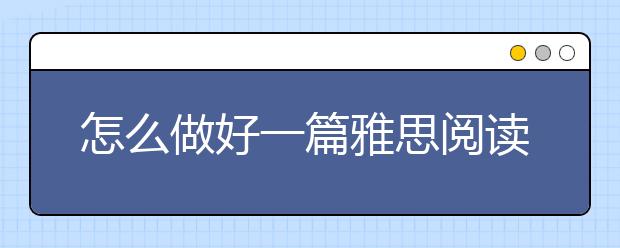 怎么做好一篇雅思阅读的填空题
怎么做好一篇雅思阅读的填空题 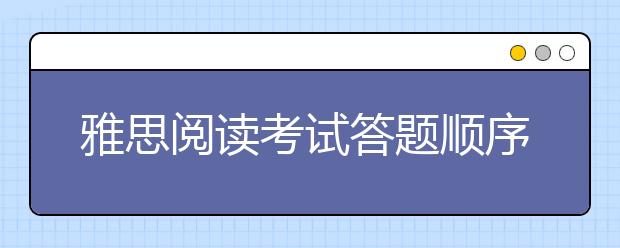 雅思阅读考试答题顺序
雅思阅读考试答题顺序 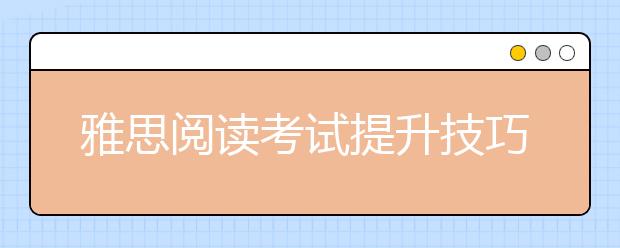 雅思阅读考试提升技巧!
雅思阅读考试提升技巧! 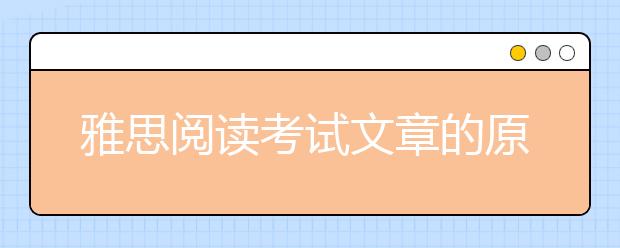 雅思阅读考试文章的原文一般是出自哪里?
雅思阅读考试文章的原文一般是出自哪里? 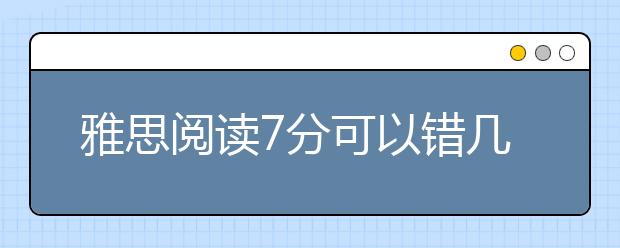 雅思阅读7分可以错几道题?
雅思阅读7分可以错几道题? 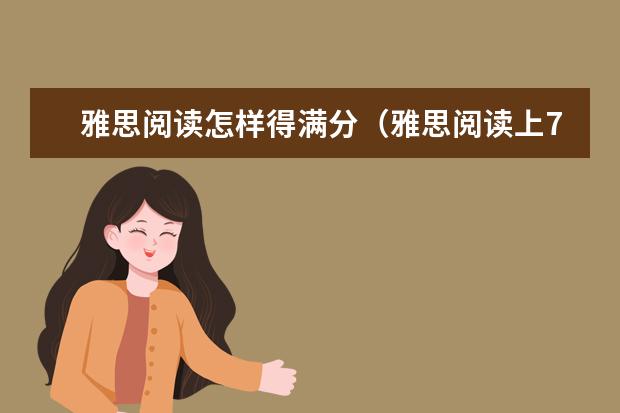 雅思阅读怎样得满分(雅思阅读上7分的技巧)...
雅思阅读怎样得满分(雅思阅读上7分的技巧)...
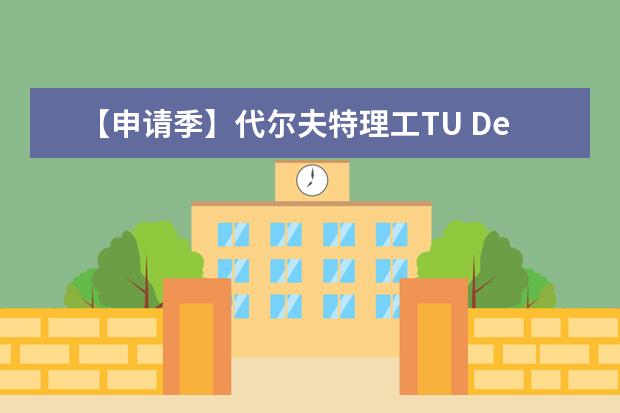 【申请季】代尔夫特理工TU Delft最新...
【申请季】代尔夫特理工TU Delft最新...
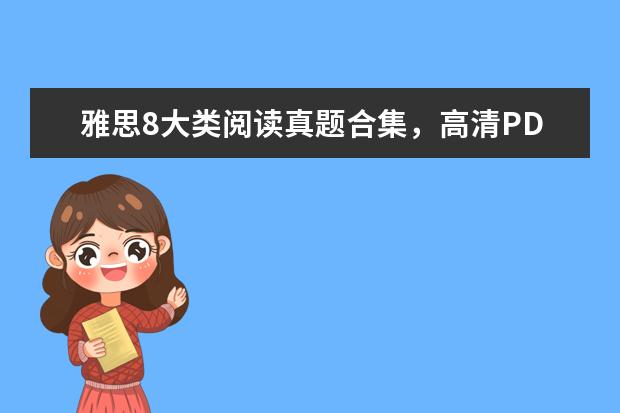 雅思8大类阅读真题合集,高清PDF可打印!...
雅思8大类阅读真题合集,高清PDF可打印!...
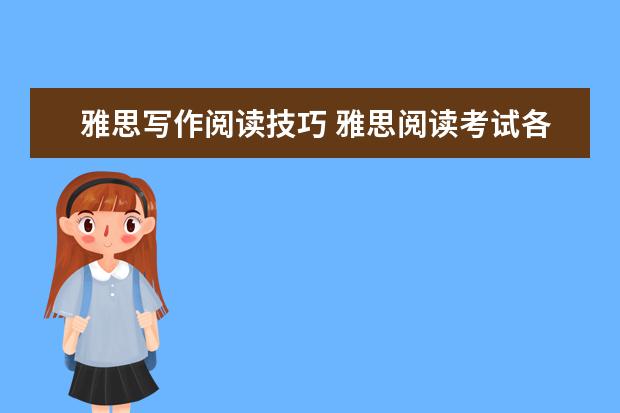 雅思写作阅读技巧 雅思阅读考试各个题型的解...
雅思写作阅读技巧 雅思阅读考试各个题型的解...
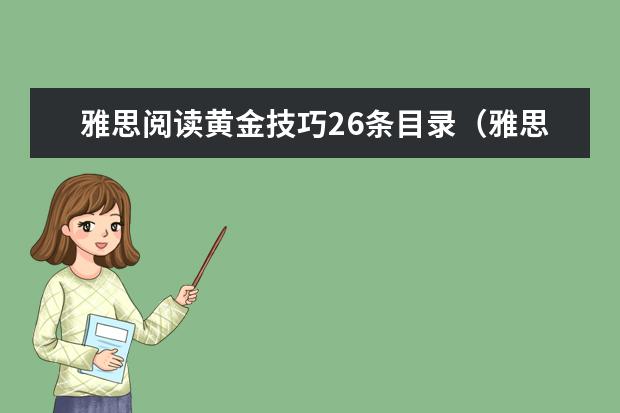 雅思阅读黄金技巧26条目录(雅思阅读时间分...
雅思阅读黄金技巧26条目录(雅思阅读时间分...